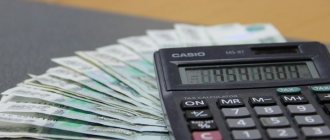A personal financial plan is the first step towards achieving your goal and achieving financial independence. The vast majority of rich people have their own financial plan, thanks to which they competently manage their cash flows and, as trite as it may sound, this allows them to become even richer and feel more confident in terms of financial security. A well-drafted plan provides a certain algorithm of sequential actions, the implementation of which will allow you to achieve your intended goal at the lowest cost. Even a simple plan will allow you to feel more stable, get rid of debt, live mediocrely, and ideally significantly improve your financial situation.
Most people don't have a clear financial plan. But nevertheless, they still have some desires. And to the question of what would you like in this life, the answers will be approximately the following:
- a lot of money A LOT OF MONEY;
- apartment;
- cottage or house by the sea;
- do not work and live on interest from capital;
- car;
- to travel a lot;
- pay off debts.
Go ahead. We ask them: “How are you going to achieve this?” And then there comes a long pause. A person begins to scroll through something in his head, think, and comes up with something like this: “Will I earn more in the future?” (we do not take into account winning the lottery and receiving a rich inheritance).
How much more? And when will this happen? And what are you doing for this? And if income increases, what next? How do you want to not work in the future and live entirely on your own funds, which will generate your monthly income? And in general, how much money do you need for this?
And in response there was silence or something completely incomprehensible.
If you recognize yourself, then read on and you will find out:
- why do you need a financial plan and what does it provide;
- how to correctly formulate your goals;
- complete compilation algorithm in 4 steps with examples;
- how to avoid mistakes and increase the efficiency of achieving your goal.
The article turned out to be quite lengthy. But I tried to take everything into account in it. After reading it you will receive complete information on the correct preparation of your plan.
Personal finance - concept and types
Personal finance is the sum total of all your monetary assets. In other words, this is all the money that you currently have: bank accounts, cash in your wallet, funds on a bank card, currency savings, etc.
Sometimes other assets, such as a home and car, are mistakenly included in personal finance. After all, you can sell them and also get money. But these objects are property, not finance. The difference between property and finance needs to be understood.
A personal financial plan is a procedure that allows you to receive the required amount (or income) by a certain date.
For example, you want to buy a car. First, you assess your current financial situation – savings and current income. Then, based on these parameters, you calculate how long it will take to implement your plan to achieve your goal.
How to set a financial goal correctly
Is it possible to set a goal incorrectly? Yes, you can. Especially at the beginning, due to inexperience. And this is very dangerous from the point of view that an incorrectly set goal, as a rule, is more difficult to achieve or is not achievable at all. And this has a very negative effect on the motivation to achieve any results. So what should the goal be? Here we are guided by the well-known SMART rule.
The goal should be:
specific
This means that the most accurate description of the goal is indicated - “to accumulate in a current account” or “to transfer to a bank account” or “to have in a wallet.” The goal “I want to be a millionaire” cannot be achieved because it is not clear what it means. This is not the right goal.
measurable
It’s simpler here, all financial goals are measured in monetary units - rubles or other currencies. It is necessary to indicate the exact amount - “accumulate 50 thousand rubles in a bank account.”
achievable
This is one of the most difficult and one of the most important points. It is very important to assess your financial capabilities. If you overestimate them and set a very difficult financial goal, then it may turn out to be unattainable for you, and accordingly, if you do not achieve results, you may lose faith in yourself. We will tell you how to correctly assess your financial capabilities in a separate article.
relevant
Two points are important here:
- the goal you set should actually allow you to achieve the desired result.
For example, you decide to buy a new TV; according to your estimates, this requires 30 thousand rubles. You set a goal, achieved it - 30 thousand rubles in your wallet. However, come to the store and realize that this is not enough, you need 5-10 thousand rubles more for the TV that you have planned. In this example, this is not so scary - there will be an unpleasant aftertaste, there will be some disappointment in yourself, you will buy a TV in 2-3 months or now, but using a loan (read whether this is good or bad in a separate article).
But in other situations, a miscalculation can be more fatal - you missed a good car on the secondary market, a deal to purchase real estate fell through, etc. Therefore, it is very important to set the goal correctly and periodically update it for medium- and long-term goals.
- the result achieved must really be significant for you in order to motivate you to achieve it.
If you have set yourself a goal - “To travel along the Golden Ring of Russia” and for this you need to save 80 thousand rubles. (this is already a financial goal). But you are not very interested in this trip, then it is very likely that you will not be very effective in achieving it and will find a bunch of other places to spend money with more interest for yourself. Accordingly, the goal will not be achieved, this is not fatal (you actually didn’t really want it), but you will give yourself a “minus” and an unpleasant aftertaste will remain and the main thing is that you will be “distracting” resources in vain. They could be used to achieve goals that are more meaningful to you.
designated in time
This is often forgotten, but it is very important. This is being neglected, and this cannot be done.
It is not possible to achieve the goal of “let’s somehow save up money for a trip to Hawaii.” This “somehow” will never happen or only by chance and coincidence, which is very unlikely.
The goal must be clearly defined in time. “Accumulate 200 thousand rubles. for travel to Hawaii by March 3, 2021.” This goal may or may not be achieved. And it’s not scary if you realize that you won’t succeed by March 3rd, but will succeed only by March 10th. The goal can be adjusted - it is not something unshakable that cannot be touched.
Example of a personal financial plan
To create an effective plan, you must first clearly formulate the goal, and secondly, take into account monthly income and expenses. Let's consider the easiest example to understand : let's say you want to purchase a computer with a monitor for a total cost of 70 thousand rubles.
Based on the fact that your salary is 50,000 rubles, and monthly expenses are 45,000 rubles, you can save no more than 5,000 rubles per month. Divide 40 by 5 and get 8. In eight months you will be able to buy a computer.
Stages of constructing LFP
Stage 1. Setting goals
To justify ourselves in our own eyes, we often convince ourselves that we are unable to achieve our goals. In fact, we are not powerless, but weak-willed.
Francois La Rochefoucauld
Where to begin? Set aside an hour of free time. Have paper and pen ready. Write down what you want to achieve in the near, medium and long term. In other words, define your goals. You just have to do it right.
| Incorrectly formulated goal | Correctly formulated goal |
| Make repairs in the apartment | Renovate the apartment in 6 months. It will take about 100,000 rubles. |
| Go to the sea in summer | Go to the sea with the whole family in the summer of 2021 in Sochi. Estimated costs will be 100,000 rubles. |
| Buy a new car | In May 2021, buy a new Hyundai Creta car. Taking into account the sale of the old car, the additional payment will be 500,000 rubles. |
| Save for your child's education | In 6 years, save up for your child’s education at Moscow State University. 4 years for 300,000 rubles. In total you will need 1,200,000 rubles. |
The meaning, I think, is clear. Goals should have:
- time limit,
- monetary value,
- specifics (vacation location, number of people, car make, name of university, etc.)
They also need to be realistic. For example, I never set a goal for our family to buy a villa on an island in the ocean. Because I can distinguish a fantasy from a real dream, which should always come true.
Further, you can divide goals into short-term (you must achieve this within the current year), medium-term - with a period of up to 5 - 6 years, and long-term - in 10 or more years.
Example.
| Short term goals | Medium-term goals | Long term goals |
| After 6 months, buy an Asus X756UA laptop for 30,000 rubles. | A year later, a family of 4 will go on vacation to Greece for 12 days. The cost of the trip is $2,500 + operating expenses $1,000. Total: $3,500. | In 20 years, retire and have passive income of $700 monthly. |
| After 3 months, update your phone. Buy a new Honor 9 worth 20,000 rubles. | In 5 years, save up money for a 3-room apartment in your city with an area of 125 square meters. m in the amount of $45,000. |
Stage 2. Financial analysis
After setting your goals, you should conduct a thorough analysis of your income, expenses, assets and liabilities. If you manage a family budget, then no difficulties will arise. If not, then it is better to postpone drawing up a plan for 2 to 3 months. And during this period, record all your income and expenses every day, down to the penny.
You can do this in a notepad with a regular pen, in Excel or Google Doc spreadsheets, in special programs on your computer or applications on your smartphone. Choose a method convenient for you. The main thing is to do this every day and teach the family to tell you about their cash receipts and expenses if you draw up a family financial statement.
Without waiting for data on monthly income and expenses, create another table to analyze assets and liabilities.
Assets are what bring you income. Liabilities are things that require expenses.
Example.
| Assets | Liabilities |
| An apartment that is used for rent. The cost of rent minus utility costs is 20,000 rubles. per month. | The apartment, which is used for housing, has an area of 150 sq. m. m. |
| Bank deposit for 3 years at 7% per annum with interest capitalization. Initial deposit – 100,000 rubles. | 2021 Hyundai i30 car. |
| Metal account in gold in the amount of 200,000 rubles. | A dacha 40 km from the city, which is used for a family’s summer vacation. |
| Foreign exchange deposit in US dollars for 1 year at 1.5% per annum in the amount of $3,000. | A plot of land for individual housing construction with an area of 10 acres, 3 km from the city with communications. |
| Bank loan for 3 years at 20% per annum. |
Please note that some items from liabilities can be easily converted into assets. For example, rent out an unused garage or sell a plot of land if you do not plan to build a house on it. Likewise, a car, if it is used to generate income (taxi, cargo transportation), can go to the “Assets” section.
Once you have a clear breakdown of your assets and liabilities, monthly income and expenses, you can move on to the next stage, “Reviewing goals and setting priorities.”
Stage 3. Goal adjustment and optimization
This is one of the most difficult and painful stages. There are many goals set, and I want to achieve them as quickly as possible. But an analysis of income and expenses shows that this is impossible. What to do?
Possible ways to solve the problem:
1. Review goals to highlight the most important and priority ones.
If your neighbors have leaked, then, of course, repairs in the apartment can be considered a priority. And if not? Maybe we should postpone the renovation for a year or two? Re-read all the goals that you wrote. What do you really want for real? It’s not like it was like a neighbor, friend, colleague. And not something that increases status.
2. Adjustment of goals to change the timing of achievement and their cost.
It's great to want the latest iPhone, but if summer and another family vacation are ahead, are you really going to trade it in for a piece of hardware?
Although there are plenty of such examples. My friends saved for a year to go to Thailand. But with this money they bought a large plasma TV that fit perfectly on the empty wall of their new apartment. To each his own.
3. Cost optimization.
If you already have before your eyes your expenses for 3 months, then you can easily find holes in the budget, and sometimes real “black holes” where money is drained. Buying expensive gifts, celebrating another birthday on a grand scale, going to cafes and restaurants, etc. The list can be endless.
Just look at what's happening in supermarkets before the New Year. At this moment it seems to me that people haven’t eaten anything for a whole year, so that they can then eat... Sorry, eat and drink for the whole next year. Shelves are being trashed with products and gifts that store employees kindly put together for you. It doesn't matter what you buy or at what price. It's a holiday...
Bad habits are a separate matter. I tried to convince people who smoke a pack a day to calculate their annual cigarette expenses. Yes, they were horrified, but they didn’t give up. The same, by the way, applies to a cup of cappuccino in your favorite cafe every morning.
There are many ways to optimize costs. And it is not at all necessary to deny yourself or your family some weaknesses. In my article on the topic of saving, I showed not all the techniques that help, for example, my family live at a decent level and regularly save money to achieve goals.
4. Increase in income.
An excellent motivating and developing way. It was he who helped me escape from the budgetary swamp into which university workers were driven by beggarly wages and humiliating treatment from the state. I began to learn a new profession, began to respect myself again and am confidently on the path to financial independence. And working at the university is now more of a hobby for me than a source of income.
What helped me and can help anyone:
- patience and perseverance - I had to study tons of information on the Internet to find something that could interest me in the issue of additional income;
- self-education - you don’t have to take expensive courses to learn, start with free lessons, webinars, trainings, articles, books;
- discipline - every day I devoted several hours to education;
- focus on results - I had a clear goal ahead, so nothing and no one could stop me.
And there is no need to whine about miserable wages and the indifference of the state. Nobody owes you anything. Make your life yourself and it will turn to face you.
All 4 methods considered can and should be used simultaneously. Then it will be a whole system, and not individual attempts to change the situation for the better. But, as they say, you can’t argue against the system. Its main goal is to free up money from your budget for investment.
Stage 4. Creation of a reserve fund
I have already discussed what a reserve fund is and why it is needed in my article on financial independence. Therefore, I will only mention here that it is an obligatory part of a personal financial plan. Without an airbag, it will be painful to fall if something goes wrong in life. You are left without a job or your salary has been sharply cut, a serious illness requiring expensive treatment, and many other factors that are difficult to foresee. But you can protect yourself.
Keep a bank deposit equal to 3 or 6 months of expenses and your mental well-being will be much better. And this will give you confidence that you will solve all your problems during this time.
If it happens that the fund has been spent in whole or in part, the first thing you should do after the situation normalizes is to replenish it to the optimal size.
Stage 5. Formation of an investment portfolio
This is the last and important stage, the result of which will be the achievement of your goals and the pride of your children for such “cool” parents. Where to start investing? From the plan, of course. But here you cannot do without the experience of competent financiers and consultants. Not everyone can afford them, although the costs are recouped several times over.
There are wonderful books by our domestic experts. For me they are real instructions for action. You can gain experience in investing on your own, no one argues. Trial and error will give results. The main thing is that it is exactly what you are counting on.
A friend of mine invested all his available money in one of the mutual funds. Over the course of 1–2 years, it lost a lot in value. A friend panicked and rushed to save his remaining savings. At the same time, he violated two conditions for successful investment:
- Didn’t diversify the portfolio, i.e. invested all the money in one asset.
- I started to panic and do stupid things. Investing in mutual funds is a long-term project for several years. The fund loses in value as well as rises. There's no hurry. 1 year is not an indicator.
As a result, he does not trust any investment instrument and prefers to keep his money in a bank account.
Determine your investment strategy. How much risk are you willing to take?
There are:
- conservative investments,
- moderate,
- high-risk or aggressive.
There are different investment instruments for different purposes. But I repeat once again - without special knowledge you can make a lot of mistakes.
The investment portfolio should include instruments with different levels of risk. The older you are, the higher the proportion of conservative investments. Make a simple table for yourself. For each type, put your share. For example:
| Conservative investments | Moderate investment | Aggressive Investments |
| 45 % | 35 % | 20 % |
Now in each group you need to write down the selected investment instruments.
When the portfolio is formed, the main and most difficult part of the LFP remains - its execution. Basic principles that you must follow strictly:
- Developing physical forms for yourself, for your goals, income and expenses, and not blindly copying examples from books.
- Strict discipline, which manifests itself in investing regularly over a long period of time.
- Annual review of the plan and its adjustment taking into account external and internal changes in the situation.
- Diversification of the investment portfolio, i.e. investing money in various assets.
Poll: How much do you earn per month?
We looked at an ideal example, but in life everything is much more complicated. For example, urgent expenses may appear, the payment will not be issued, the price of the computer will rise, etc. Therefore, it is recommended to draw up a financial plan taking into account an error of 10-20%.
It is also important to correctly calculate your expenses. The level of actual expenses in your financial plan may be greatly underestimated. Using a special program for home accounting, you can create the most accurate picture of your personal budget.
To draw up a financial plan, we recommend using the following tools:
- Personal financial plan – calculator in Excel
- A simple table of income and expenses in Excel
- Advanced table for controlling the family budget
- Programs for home accounting
The very fact of setting a financial goal has a positive effect on life. The goal forces you to be pragmatic and calculating. When faced with real numbers, there is a desire to achieve the goal faster. This forces us to look for new sources of income and optimize old ones. If personal income is small, then the time frame for achieving the goal can be very long. For example, saving 10 thousand a month, it will take five years to save for a car for 600 thousand. Such deadlines do not suit everyone - some begin to look for ways to increase their income and this leads to fundamental changes in their lives.
Take the test:
Test: What salary do you deserve? Find out the psychological limit that determines your income level. Everyone receives the salary that the subconscious allows. It is a subconscious block that prevents many from receiving a decent salary. The test will reveal a psychological block.
↑ contents ↑
FAQ
For what period is it recommended to draw up a financial plan?
How is there no such specific deadline? For minor goals, such as buying a new computer, phone, saving for repairs, it is recommended to draw up a plan for six months to a year. If your goals are more global, buying an apartment, saving for old age, then make a plan for several years in advance. This could be 10, 15 or 20 years. Further, it is advisable to break this period into several smaller ones. Nobody knows what will happen to you and your income in a few years. Therefore, we will definitely formulate a first plan for the next 2-3 years, and then based on your capabilities.
Is it possible to have several LFNs?
Of course you can. In this case, you need to choose priority ones among them, determine in what proportion you will contribute funds to achieve each goal. Of course, you need to save more for more important goals. But it is advisable to have no more than 2-3 goals. Otherwise, you risk wasting all your money on them and ultimately not achieving a single goal.
I have an existing loan, does it make sense to make a plan or is it better to pay off my debts first?
Repaying a loan ahead of schedule is also a kind of financial plan. But if you have other goals in your plans besides repayment, then 2 options are possible. If you have a very expensive loan (20-30% per annum), then of course it is better to first throw all your energy and resources into repaying it. And only then begin to formulate your plans for the future. Otherwise, you will always be at a disadvantage. We invested the deferred money at 15% per annum, and the loan costs were 2 times higher.
If you have free debts (borrowed from friends, acquaintances), give some of them to pay off, and use the other part for your plans.
A mortgage loan taken for many years stands apart. Here, too, you need to approach it based on logic and your capabilities. Either pay it off as soon as possible, thereby saving a significant part of the funds from reducing overpayments on interest, or accept everything as is and, in addition to monthly loan payments, simultaneously implement your other financial plans.
Planning expenses and income in the program
The accuracy of your personal financial plan depends on taking into account the expenses that will accompany you on the path to achieving your goal. Having accurate numbers, it is easier to calculate the time frame for achieving goals. To create a personal budget, we recommend using special tools, for example, the Housekeeper program (works under Windows).
You can download the program from this link >>
The peculiarity of the program is that you can plan your expenses and income completely free of charge (this section is available without payment). The program also makes it convenient to keep a shopping list and track your income.
Let's briefly look at the planning principles in this program. First you need to go to the “Plans” section. There are two areas here - a plan of expenses and income for the specified month (see screenshot). First, we create a list of categories for the current month. To do this, click the “Add” button, in the new line click the down arrow (drop-down list) and select the desired category. You can do it easier - click the “Fill in all” button and all the categories that are in the program will be automatically added to the table. All you have to do is delete unnecessary entries.
We fill out the income section in the same way. The screenshot shows that car expenses (RUB 7,000) exceeded the limit by RUB 1,000. This is also noticeable for the “Clothing” category (exceeding the limit by 2000 rubles). The point of the table is to create a monthly spending structure, and then try to stay within this plan.
We can edit two parameters – category and flow level. The third column “Expense (actual)” is generated automatically based on actual expenses that are added in the “Expenses” section.
To make the picture of your personal finances as accurate as possible, you need to systematically add your transactions to the program. This tool is more convenient than an Excel spreadsheet because it requires minimal user action.
Full overview of the Housekeeper program >>
↑ contents ↑
Errors and recommendations
When drawing up personal financial plans, many people make the same mistakes and do not take into account many factors. This together makes it difficult to achieve the intended goals, and in some cases makes them impossible. It is better to know all the pitfalls right away on the shore and swim with the flow, and not against it. Additionally, our advice can significantly speed up your process, in some cases even significantly.
Unrealistic deadlines and amount of goals
As already described above, there is no need to wish for yourself what you are unlikely to achieve. It's better to focus on more real things. Of course, the goal may be slightly too high. This will give you an incentive to look for additional opportunities to make your dream come true.
Too much amount
This refers to the amount set aside monthly. Of course, the more you can save the better. But you don’t need to tighten your belts to the limit and live on 5 kopecks a week. The goal is of course good, but you need to live now. Moreover, constantly living in spartan conditions, you risk one day giving up on everything, all your goals and plans. Therefore, leave yourself some financial reserve to breathe more freely.
Lack of discipline
Setting goals and making a plan is only half the battle. You could even say this is the simplest and easiest thing. What awaits you ahead will be a real test for you. You can create a plan in just an hour, but you need to stick to it for several months (years, decades). The success of your venture will depend on your actions in the future.
Too long
It is very difficult to stay motivated and stick to a month-to-month plan that spans several years. Therefore, further break it down into several stages. It will be much easier to reach everyone. And the motivation will be at the level. If you are saving for an apartment (country house) for 10 years, then the 1st stage will accumulate 10% of the cost within a year. You can take into account the footage of your future home - save for the kitchen, hallway, bathroom, toilet. Then, for example, the accumulated money would be enough for you to buy out 1 room, then another. Think of something similar for yourself.
Inflation
For some reason, almost everyone forgets when money depreciates. This is especially true over long periods of time. Agree that 10,000 rubles now and 10-15 years ago are two big differences. Previously, you could buy a lot more with them. The same goes for your plans. If you plan to save a certain amount, it may turn out that by the original date it will not be enough due to the fact that during this time the prices for everything have increased. But here they will come to your aid...
Compound interest
They work in conjunction with inflation. Typically, the higher the inflation rate in a country, the higher the return on investment will be. But here it is the difference between income and current inflation that needs to be taken into account. It is this difference that will show your real income.
By investing money at 15% per annum with annual inflation in the country at 10%, your real income will be 5% per annum.
In order to more or less realistically calculate capital gains from your investments, use an investment calculator. In the “return” column, enter exactly the real return on investment, adjusted for inflation.
How to find out this profitability? It is very difficult to determine the exact figure. But there is a certain average interval:
- Bank deposits - real yield 0 - 3% per annum
- Bonds - 2-5% per annum
- Shares - 3-8% per annum.
Pay yourself
After receiving income (salary, bonuses), we immediately set aside a predetermined portion for your goals. This will relieve you of the constant headache of where to get money at the end of the month, when almost everything has already been spent, but nothing has been put aside yet. Additionally, you will not be tempted to spend this money on other “necessities.”
Exact adherence to plan
On the one hand, this is good, but there is no need to blindly carry out everything planned in advance and fully automatically. You can make small adjustments based on your current capabilities. We raised your salary, gave you a good bonus, found a part-time job - we adjust the plan. Such periodic review can give you a significant acceleration in moving towards your goal. There are many options: save everything you receive above the average salary: either it’s all, or half, and spend the other half on yourself for your loved one, or save a certain percentage of what came from above, or a fixed percentage of your entire income. We received a lot - we put a lot aside, our salary was cut - we reduce the contribution to the dream in the same proportion.
Optimization of expenses and income
The easiest way to achieve your financial plan faster is to save as much as possible. How to do it? There are only two ways - we reduce expenses and increase income. The easiest way to start is by optimizing your costs. Once again, carefully analyze what can be reduced and what can be completely abandoned in the name of a good goal. Perhaps you spend too much on entertainment, alcohol, smoking, lunches in cafes and restaurants. Everyone can find something of their own that they can limit themselves to (a little or completely).
After such optimizations, you can save significantly more money, which will ultimately give you the opportunity to achieve your goal much faster. Or get a more significant financial result within a predetermined period. What to focus on? Almost any family can save an additional 10 to 30% through small optimizations.
By investing 3,000 rubles in the stock market every month with an average annual return of 15%, after 15 years you will have 2 million rubles in your account. But if you increase the contribution amount to 5 thousand, you will receive an additional 800 thousand!
If you save 10% of your income, but then were able to optimize your expenses by 20%, then the amount of free funds you have will triple and things will go 3 times faster.
Poll: How much per month can you save?
Budget savings begin with cost analysis. First you need to find the most expensive directions. For example, the largest expenses are observed in the “Food” section. It is necessary to analyze the structure of this section (costs per month):
- Lunch at work – 7,000 rubles.
- Restaurants and bars – 12,000 rubles.
- Food products – 11,000 rubles.
- Sweets – 5,000 rub.
- Total per month: 35,000 rub.
How to reduce your lunch costs? You can take food with you. In this case, it is easy to cut costs twice. For example, the maximum cost of a home-made lunch (soup or porridge with meat + bread and sweets) is approximately 150 rubles. We multiply this amount by 22 working days and get 3300 instead of 7000 for lunches in a cafe. Homemade food not only saves a significant amount of personal finances, but also has a positive effect on health.
Who will help you draw up the LFP?
Option #1. Consultant
It is better to draw up your first financial plan with a specialist.
In Russia, the profession of “independent financial consultant” appeared not so long ago. But the demand for NFC services is growing every year.
By the way, guess at what time the consultant’s phone is ringing off the hook with calls from potential clients? That's right, in the midst of another crisis! When the ruble falls, inflation goes through the roof, banks go bankrupt, and savings rapidly depreciate.
People in a panic run to a “money specialist” for advice. And for some time they follow his recommendations. And then the market situation levels out. And the financial plan is “pushed forward” as unnecessary.
A few years later the situation repeats itself.
What's good about an advisor? Competent specialist:
- Objectively assess the current financial situation and your capabilities (income-expenses, assets-liabilities). Even at this stage, you will learn a lot about your personal finances.
- Highlights strengths and weaknesses.
- Adjusts financial goals from the point of view of their reality and achievability.
- He will prescribe a clear step-by-step algorithm for achieving it.
- Describes several possible future scenarios.
- Selects the right instruments taking into account the specifics of the client (income level, risk appetite, investment period, etc.).
All this, of course, you can do yourself. But most likely, due to inexperience, you will make a lot of mistakes and lose a lot of money and time. For example, I did it myself, but then a consultant checked me.
Option #2. On your own
However, no one is stopping you from working out the “material parts” yourself and drawing up a financial plan yourself.
Hint options:
Books
There is a sea of educational materials on the Internet. Almost all of them can be downloaded for free in fb2 or epub format.
I highly recommend two books.
- Vladimir Savenok “How to compose a physical form. The path to financial independence." The author literally tells on his fingers what, how and why. Savenok even provides an Excel sample at the end as an example to fill out. Another huge advantage of the book is that it is based on the author’s experience working with Russian clients!
- Another great book: Andrey Paranich “LFP. Instructions for compilation." But I’ll say right away that just reading such books is not enough! It is necessary to put useful recommendations into practice as soon as possible.
Educational “live” format (webinars, open lessons, trainings, courses)
I recommend Ilya Yakovlev and his course “How to break the financial barrier.” In addition, I can say that this is a very good start for a beginner who is just learning the basics of financial literacy.
During the course you will learn a lot of useful things: from planning personal finances and time management, to business relationships and loans with investments.
Poll: How many sources of income do you have?
In the digital era, getting a new profession is not a problem. There are many training courses available on the Internet that will allow you to gain additional specialization. For example, you can study to become a designer, internet marketer, copywriter or programmer. The new specialty will help you find additional income via the Internet and work as a freelancer (without constantly visiting the customer’s office).
Finding a new, higher paying job is also not a problem. If you are confident in your abilities and consider yourself a professional, then you can safely send your resume to large companies. If you doubt your competence, it is better to undergo additional training and expand your professionalism. True professionals are always paid well.
There is no need to rush to start your own business. It is necessary to calculate all risks in advance and draw up a clear financial plan. If your future business is related to current hired work, then you can try to identify and head a separate direction in your enterprise, and then scale up (create your own separate company). This way you will share risks with your employer, gain experience and be aware of all the features of this business.
The considered methods of optimizing income and expenses allow you to change the algorithm. A personal plan makes you look at life from a different perspective and begin to act in your own interests.
↑ contents ↑
Who needs?
Every person needs a personal financial plan. It is difficult to do without money to achieve your goals. It is in order to be financially independent that you need to draw up your own individual plan.
And there are those who simply need a personal financial plan:
- Businessmen.
- Debtors.
- Freelancers.
- People prone to spontaneous spending.
Businessmen always clearly understand that the fortunes of their company depend entirely on them. If a manager does not know how to manage his own money, then what can we say about the company’s affairs?
The situation with debtors is somewhat different. Most people who find themselves in debt simply do not want to get out of it. Such people need a clear plan on how to earn money, what to spend, and what funds to use to pay off their own debts.
Freelancers are people who work for themselves. Online businessmen who provide their own one-time services. It is precisely because the stability of the financial condition of such people leaves much to be desired that they need a financial plan. It should include “order volume, amount, planned income.” The minimum set of actions that need to be performed every month in order to remain financially independent.
And finally, the last category is impulsive people. Surely, you have a friend who from time to time says, “I don’t know where I put the money.” These are the people who should learn to limit their spending.
Overall, a financial plan will help everyone. Being in control of your finances and being independent is quite a valuable quality.
Investing Personal Finance
The implementation of a financial plan implies constant accumulation of funds. Your savings should not lie dead weight, because in conditions of financial instability, savings depreciate naturally - due to inflation.
It is better to divide large sums of money into parts and invest in different financial instruments. The simplest and most reliable way is to divide available funds into three equal shares and distribute them as follows:
- Investment in US dollars.
- Investment in Euro.
- Savings account in a bank.
Currency investments can also be arranged in the form of a bank account, to which interest will be accrued. This way you will save money from inflation and be able to implement your financial plan on time.
Riskier investments of free money are the following instruments:
- Stock market.
- Mutual investment funds (UIFs).
- Game on the Forex exchange.
By buying shares of the largest players in the energy sector (“blue chips”), you can ensure an annual return of -10% to +20%. Mutual funds will allow you to earn more - up to 30% per annum. But the risks are many times higher than investing in blue chips. The Forex currency exchange is generally an unpredictable tool that can only be used by professionals.
The optimal investment of personal finances would be the following scheme:
- 25% – US dollars.
- 25% – Euro.
- 35% – savings account in a bank.
- 15% – blue chips.
Another relatively safe investment method is buying gold. Statistics show that the price of gold has been growing steadily in recent years. There is no point in buying gold bars directly. For this type of investment there is a special tool - an impersonal metal account (UMA).
Compulsory medical insurance is a type of bank account that is backed by gold (or other precious metals). Transactions for the purchase and sale of metals can be carried out through the bank’s personal account. The process of buying gold is similar to purchasing currency on the stock exchange.
The advantages of investing through compulsory medical insurance include the following:
- Gold and silver have low volatility over long periods of time.
- High liquidity is achieved through the rapid crediting or debiting of metal from the account.
- Security of transactions - all transactions are carried out within the banking system.
- There is no need to create a special storage facility for metals.
↑ contents ↑
Sample for a year
Now let's look at how to draw up a financial plan for the year using an example. I turned everything that I wrote about above into real numbers in thousand units. and compiled a table in Excel with calculation formulas, which I present to your attention (click on the image to enlarge):
Please note that in the financial plan for each month and for the year as a whole, I made 2 columns: plan and fact. We will fill out the plan immediately, and we will add the facts as we implement our plans. So we will always, at every stage, see how much we “fit” into the planned budget, into our financial plan.
In the example, we consider an ordinary family in which the main income of the husband and wife is wages. According to available forecasts, a small gradual increase is planned, and in December the husband traditionally receives a large bonus (almost double his salary). We add all this to our personal financial plan. The family also has a deposit in the bank, from which it receives a small passive income and plans to replenish it with accumulating savings, small part-time jobs in the summer, and plans to sell the old car in June. We also include all these areas of income in the financial plan for the year, and summarize the income.
After this, we begin planning expenses. As I already wrote, we do this in order of priorities, and comparing with the data of the past year. In this case, we first plan the remaining repayment of the loan (for this, the first three months will be enough for us), then the monthly creation of savings. It is also important for us to make a small renovation at the end of the year (we will split the costs for it over 4 months), and in August the family plans to spend a large amount on vacation - we also enter it right away (if it doesn’t “fit in”, we can adjust it later).
Then we begin to plan all current expenses: utilities, food, miscellaneous. At the beginning of the year, we plan to spend approximately the same amount on these cost items as we spent in the last months of last year, then gradually increase the amounts adjusted for inflation. We plan to pay more utilities during the heating season, and less in the summer, taking into account the upcoming increase in tariffs.
We add mandatory unforeseen expenses (if they don’t happen, great, our financial plan will be exceeded, but if they arise, the funds for them will always be available), we leave small monthly expenses for recreation and entertainment. All we have to do is plan the purchase of clothes and shoes: we plan this for those months that allow us to do this, in which expenses on other items are minimal and a large cumulative balance is formed.
That's it, our personal financial plan for the year is ready! It took me no more than half an hour to compose it. Next, all that remains is to follow the planned plan, enter actual data for each month taken from home accounting, and realize your financial goals.
Having implemented our personal financial plan in the example, our hypothetical family next year:
- Will pay off the loan in full (45 thousand monetary units);
- Increase your savings (by 90 thousand monetary units);
- Will make repairs (for 100 thousand monetary units);
- Will go on vacation (for 200 thousand monetary units);
- Will replenish stocks of clothes and shoes (by 80 thousand monetary units).
At the same time, she will always have the necessary funds for food, utilities and other current expenses. At the end of the year, a positive balance of 20 thousand is formed. units And in the absence of unforeseen expenses, the financial plan will even be exceeded (up to 42 thousand additional monetary units will be freed up).
Common planning mistakes
Fuzzy goal setting. The plan for achieving a financial goal should be as clearly formulated as possible. For example, if you plan to purchase a car, then the goal is formulated as follows: a car of a certain brand, in such and such a configuration, at a specific price. Everything should be as specific as possible. After this, we formulate a plan to achieve the goal:
- We have a goal expressed in digital form.
- We analyze our current budget.
- We optimize income and expenses.
- We divide the cost of the object by the amount of monthly savings and get the number of months in which the goal will be achieved.
A typical planning mistake is underestimating monthly expenses and overestimating income. You need to accurately calculate your expenses, which is why we recommend using special financial tools - programs or Excel spreadsheets. If there is no clear picture of expenses, then when drawing up a plan you will have to allow for a large error.
Setting goals
What is a personal financial goal is the result you want to achieve.
It must be measurable. For example, I want to become rich - this is a bad goal. It is not clear how much money you need for this. You need to express your thoughts more specifically. Goals can be material or financial. Materials must be translated into monetary equivalents in order to understand what to strive for.
For example, you want to go on a family vacation abroad next summer. This is your goal. Material. Fine. How much money will you need for this? 50, 100 thousand, maybe 150 or all 200. You don’t know.
Or you want to save money for a comfortable old age. How much amount do you need to live a comfortable standard of living? Unclear.
The right goals should be set like this:
- buy a new TV for 30,000 rubles;
- make repairs in the apartment - 200 thousand;
- take out a mortgage - you need money for a down payment - 350 thousand;
- save up for a child’s education at university - 300 thousand.
Setting your goal correctly is just the beginning. We need to develop a plan to achieve it. What costs are you willing to bear and from this we get an approximate time frame for achieving the goal. If the period does not suit you (too long), then we adjust our costs upward. As a result, you should end up with some optimal balance of monthly expenses to achieve your goal without too long a deadline.
For example, your goal is a new laptop for 50 thousand rubles. You decided to save 3 thousand a month. It will take you almost 1.5 years to achieve. Not a short period of time. By increasing expenses to 6 thousand, the goal will be achieved in 8 months.
Video on personal financial planning
The video contains information about the principles of personal finance management. The author notes that the most important point is setting financial goals, and everything else (income, expenses, investments) is secondary. First you need to make a list of goals, and then indicate the approximate time frame for achieving each of them. This list should serve as an incentive for further action. The second action is the search for means to achieve what you want. The author of the video insists that setting financial goals is primary, and finding funds for their implementation is a secondary task.
The next video talks about how to create a personal financial plan. The author focuses on financial control. The stages of financial planning are discussed here. First, an assessment of your current state is made - how much you earn and spend. The author suggests monitoring your expenses on a daily basis - how much money you spent per day and on what. This is how your expenses are analyzed and further optimized.
↑ contents ↑
For what period is the LFP drawn up?
Let's talk about the period for which a personal financial plan is drawn up. Most often this is a fairly long period, from 5 years or more. I would even say that such plans should be made for a period of more than 10 years.
Why?
Because within this plan, a person plans to achieve his long-term financial goals. These are large, strategic tasks - so their solution requires time and careful planning.
There is one more important point. The fact is that when creating capital, the time that a person has for savings is very important. Because time, through compound interest, seriously multiplies the amounts that a person saves to create the funds he needs.
But in order for your capital to begin to grow exponentially due to the power of compound interest, you need to invest for the long term. Therefore, LFP is sometimes also called a personal investment plan. This name emphasizes that with the help of this tool a person plans his future for the long term.
Main investor risks
And now a big section about the risks of investing. I hope a realistic look at this niche will not discourage you from building a better future.
Market risks
Almost all investment assets are subject to market risk:
- The company's shares may fall sharply in price.
- The bonds will not be redeemed at maturity due to the fact that the issuer has declared a technical default.
- The bank where the deposit is opened becomes bankrupt.
- A large-scale financial crisis could lead to a collapse of world stock markets and pull down major indices.
- A promising business brings continuous losses, etc.
Market risk includes other types of risks. For example, country and political. Agree, property rights (and not only) are much better protected in Europe and the USA than in Russia.
How does country risk affect asset prices?
Fresh example. In 2014, the price of oil fell sharply. In Russia, this led to a double devaluation of the ruble. At the same time, the currencies of many other countries fell in price. And now the most interesting thing: the Russian economy has sank much more than the economies of more stable countries exporting “black gold”!
Based on our preparedness for market risks, we divide our portfolio into three parts: conservative assets, moderate and aggressive.
Conservative assets
Conservative assets guarantee the safety of capital.
The rating of such assets should not be lower than A. The current sovereign rating of Russia from different agencies is “BB+”, “Ba1” and “BBB-”. This means that “for good measure” none of the instruments of “Russian origin” can be considered conservative ! Even federal loan bonds or deposits in Sberbank.
Conservative assets are banks, companies and funds in countries with a rating of at least A. In 2021, such countries include, for example, Australia, Canada, China, France, Germany, Sweden, Norway, Switzerland, the USA and the UK.
Examples of conservative instruments: bonds of issuers rated A and higher. This also includes investment funds that invest in conservative instruments in countries with a rating of at least A.
I repeat: from the point of view of a credit rating at the country level, not a single Russian asset can be considered conservative!
Moderate assets
Moderate assets can provide good returns over the long term, but at times their prices can fall sharply.
Examples of moderate assets: blue chip stocks, mutual funds and mutual funds based on major country indices (SP500, FTSE, NIKKEI).
Aggressive assets
Aggressive assets can “jump” up and down frequently and with a large amplitude. They are capable of bringing 100% profit in just a year, and after two they “collapse” by 50%.
Examples of aggressive assets: trust management in trading on the stock exchange or foreign exchange market, futures and options, shares of medium or small companies and funds based on them.
How to calculate the proportion of instruments in LFP?
First of all, it depends on the timing and goals of the investment. And also on your psychological readiness for risk.
Some people calculate the proportion using the formula: “Investor age = share of conservative assets in the portfolio,” but it seems completely inadequate to me. For example, if you are a 30-year-old middle manager and decide to save for retirement, which will happen in 30 years, why do you need as much as 30% in bonds?
Currency risks
Currency risk is fully manifested during periods of sharp fluctuations in the national currency. At the end of 2014, almost all assets in rubles depreciated by more than half.
You can protect yourself from currency risk (as well as from market risk) only through competent diversification.
Let's sum it up
It's actually not that difficult to create a basic plan. It is much more difficult to strictly adhere to it for years. However, I still recommend showing your first physical therapy to a professional!
Unfortunately, any plan is not a panacea or a “secret tool” for millionaires. This is just the first step towards financial freedom. Tested for myself: it really helps you take control of your personal funds and achieve goals without being distracted by nonsense. This is the only way you can avoid gross mistakes and immediately move in the right direction. After all, the most important thing in this life is time. Is not it?
Do you already have it? Subscribe to updates and share links to fresh posts with your friends on social networks!











